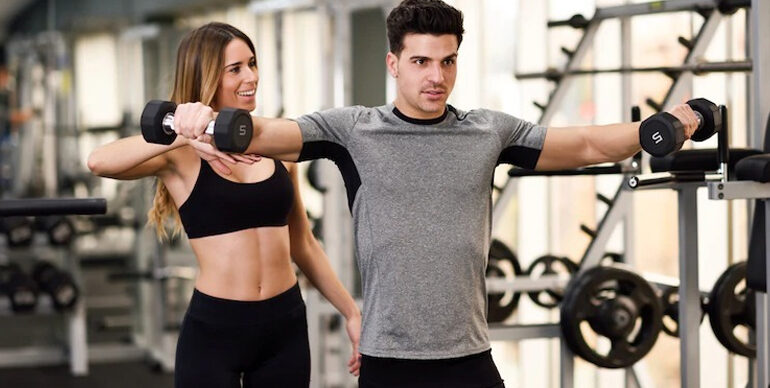
Lets talk a little bit about Muscular Conditioning, Muscular Endurance and Muscular Hypertrophy today – terms which your personal trainer must have put across a few times in your training routine.
What is Muscular Conditioning
Muscular Conditioning is the process though which muscles, bones, cartilage and connective tissues such as ligaments and tendons are conditioned to be able to absorb impact and produce force. If a person has not been gradually conditioned then a sudden exposure to increased or repetitive loading can easily cause an injury. Sedentary People who have taken to running get a condition known as Shin Splints which are a common example of running without getting enough conditioning in the lower body. A good personal trainer will ensure that a a physically inactive client starts off with a good conditioning training program that will increase bone density and also the strength of connective tissue such as ligaments and joints and help to increase the supply of blood to the muscles. This effectively reduces the risk of injury as a client’s strength gradually increases over time. To allow the body to adapt, the intensity and volume of a conditioning program should generally start at low intensities and be increased gradually.
What is Muscular Endurance
Muscular Endurance refers to the body’s ability to continue to produce force over a larger period of time. A tug of war is a classic example of muscular endurance and strength whereby one has to pull for a long period of time. To improve muscular endurance one has to sustain muscular work for a long period of time and shorten the recovery periods. Muscular conditioning should usually take place before high intensity training and loads in order to prevent injury.
What is Muscular Hypertrophy
Most of the clients who come to us for personal training generally want to build muscle and embark on an exercise routine that will help them to bulk up and get beefy. Most men want to build muscle in the upper body to look impressive and in some cases to increase strength and weight for improved sports and athletic performance. Muscles increase in size through a process known as hypertrophy which is basically meant to describe an increase in the size of muscle fibers. Muscular hypertrophy will happen when you work at high intensities causing muscular fatigue and damage. It is this fatigue and damage that stimulates the repairing and rebuilding process in your muscles and results in muscle growth. Fitness programs that are designed to encourage hypertrophy have to maximize both load in order to cause muscle damage and also increased volume in order to cause muscle fatigue.
Factors that Influence Muscle Mass
A lot of variable factors influence the ability of a person to pack on muscle mass. These include:
Hormone Levels
When a person has high levels of testosterone and human growth hormone (HGH), their potential for muscular growth is enhanced. Since women have lower levels of testosterone than men it is harder for them to put on large quantities of muscle mass. What determines high levels of hormones in both sexes? Good question. Genetic is the main fatcor that determines levels of hormones but hormone levels are also influenced by environmental factors. Both testosterone and HGH levels have been found to increase in one’s body following intense exercise.
A personal fitness trainer can also improve the client’s chances of building more muscle by adapting the workout program to increase the testosterone and HGH levels in their systems. Testosterone levels can increase by selecting exercises that require large muscle groups to work and work them at higher intensities with lesser rest periods. Reducing long steady cardio work will also improve HGH levels because low intensity aerobic work such as jogging or cycling can reduce the levels of hormones in the body and slow down muscle building.
There is one more factor that can affect the levels of Growth Hormone and that is DIET. Clients must be encouraged by the trainer to ensure that a positive energy balance is maintained by ingesting adequate carbs and proteins especially before and after workouts.
Genetic Predisposition
Nature also has a final say in bodybuilding. Some people are high responders while others are slow or non-responders especially where weight training and muscular hypertrophy are concerned. Genetics ultimately decides both the proportion of fast and slow twitch fibres that a person possesses and also determines the hormone levels. This means that a certain portion of the population is favourably blessed by nature to respond faster to training than others and this set of people will find that improving their muscle mass is easy in comparison with the non-responders who may have to work doubly hard to achieve the same results.
Do not miss a single article!
Submit your email id to get new articles directly into your email inbox!
- Zumba Dance Fitness at Byjus - February 25, 2020
- History of Corporate Wellness Programs - February 18, 2020
- Yoga at a Conference - December 11, 2019




Add Review